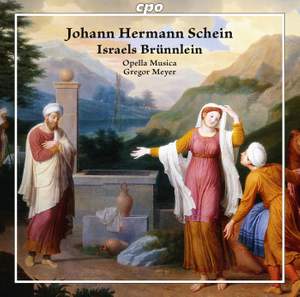In the early 17th century, Italy was the wonderland of music, all new ideas and suggestions came from here, and whoever was a composer in the north - thus also in Germany - could not avoid these innovations, for example the 'madrigalian manner'. Johann Hermann Schein, too, enthusiastically embraced the southern stimuli as they reached the ears of German musicians in madrigals and sacred concertos from the beginning of the century, but he was never able to deny his musical upbringing and education rooted in German chapel and cantor tradition. This is especially true of his cycle of 26 sacred madrigals for 5 voices and b.c., the Israels Brünnlein - Fontana d'Israel, published in 1623, when Schein was already Leipzig's Thomaskantor. This cycle is virtually a combination of the German-Dutch motets tradition and the New Italian art of expression. Schein commands the various stylistic phenomena with aplomb, committed only to the affects and the expression. The collection is a step on the way to a more subjective, emotional practice of faith, as it then breaks through in Pietism.





